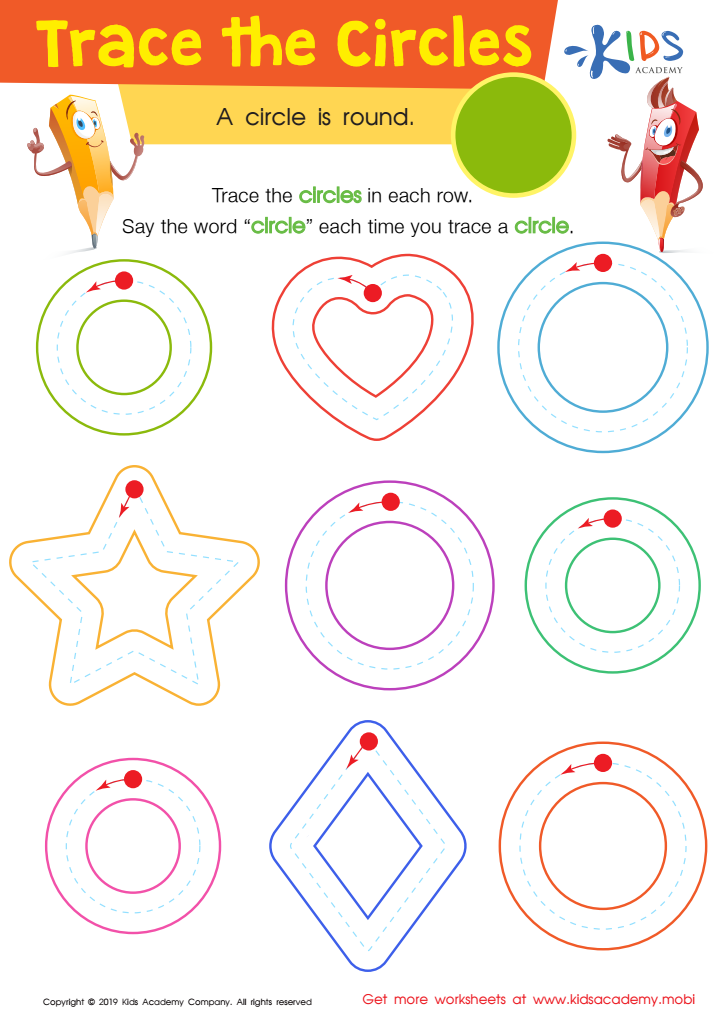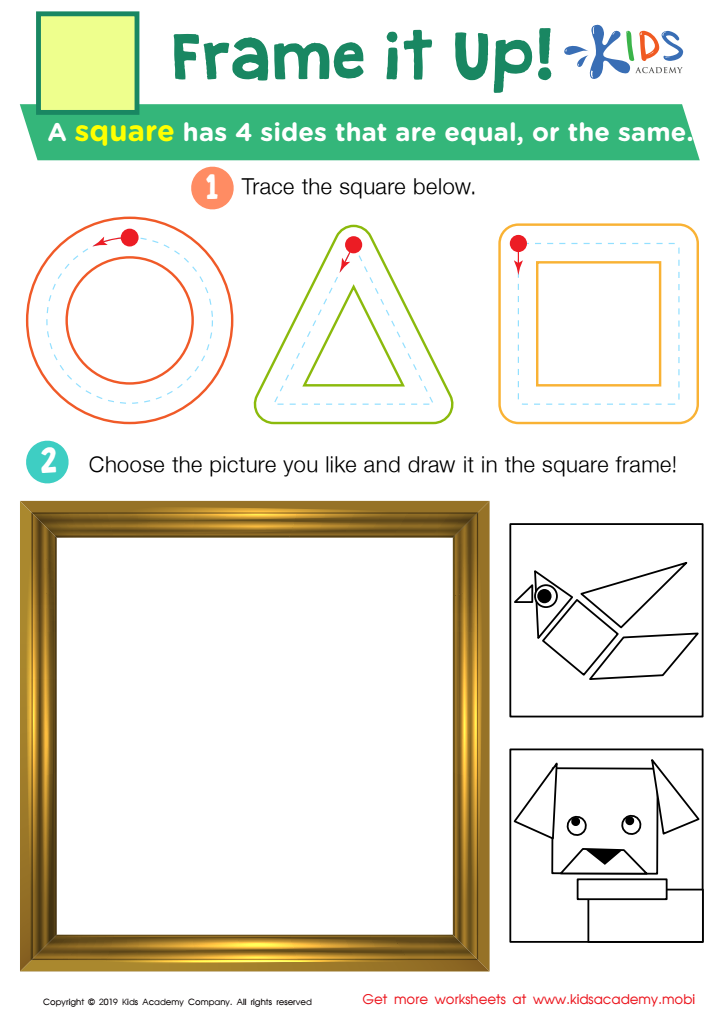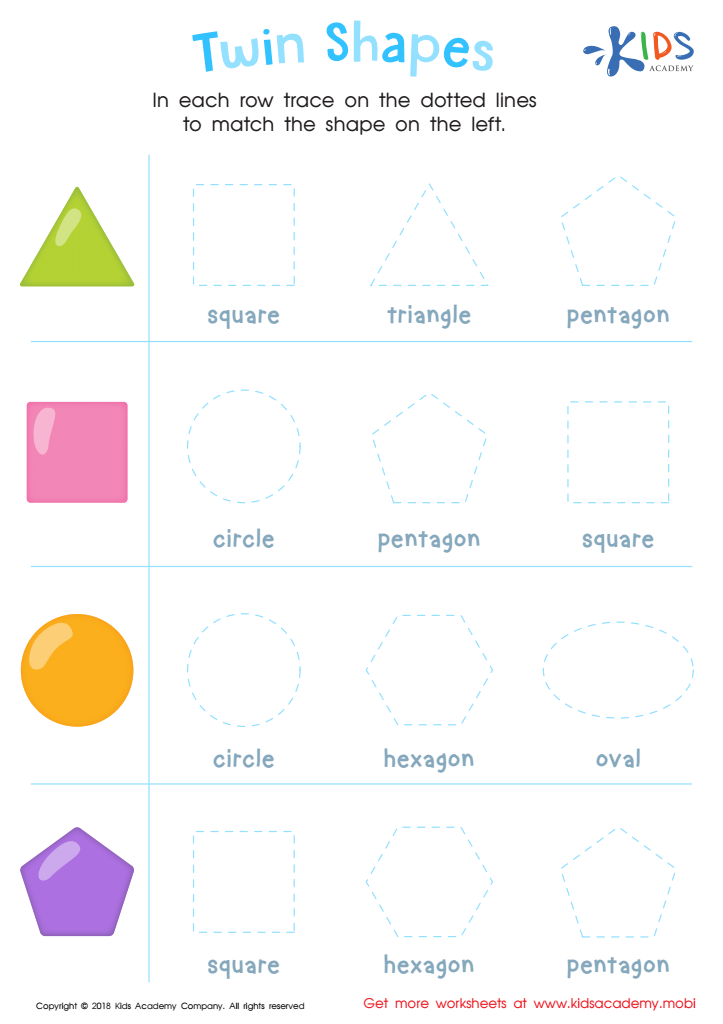Tracing Shapes worksheets activities for 8-Year-Olds
4 filtered results
-
From - To


Trace The Circles Worksheet


Frame it Up Worksheet


Drawing with a Little Monster Worksheet


Twin Shapes Dot-to-Dot Worksheet
Tracing Shapes worksheets activities are an incredibly useful tool in the realm of early childhood education, serving multiple developmental purposes with simplicity and effectiveness. These activities, meticulously designed for young learners, harness the power of tracing to bolster several key skills. Here’s why integrating Tracing Shapes worksheets into educational routines can be incredibly beneficial.
Firstly, Tracing Shapes worksheets activities are instrumental in refining fine motor skills. As children trace over the outlines of various shapes, they engage in precise movements, fostering hand-eye coordination and developing the strength and dexterity needed for writing. This meticulous activity lays the groundwork for future academic tasks, including handwriting and drawing.
Moreover, these worksheets serve as an introduction to basic geometry. Through the act of tracing circles, squares, triangles, and more, children become familiar with these fundamental shapes, an essential component of their mathematical foundation. This early exposure not only aids in shape recognition but also in understanding the spatial relationships and properties of these shapes, setting the stage for more complex mathematical concepts.
Beyond the tangible academic benefits, Tracing Shapes worksheets activities also nurture attention to detail and concentration. The focused nature of tracing requires children to pay close attention to the boundaries of shapes, promoting a disciplined approach to tasks that can translate into various areas of learning and daily life.
Furthermore, these activities can be incredibly versatile and adaptable, catering to a wide range of skill levels and interests. Whether it’s through the incorporation of colors, textures, or themes, Tracing Shapes worksheets can be customized to maintain engagement and challenge learners appropriately.
In conclusion, Tracing Shapes worksheets activities stand out as a multifaceted educational tool. By supporting fine motor development, introducing basic geometry, enhancing concentration, and offering adaptability, they contribute significantly to the holistic development of young learners, making them a valuable addition to any educational toolkit.
 Assign to the classroom
Assign to the classroom












